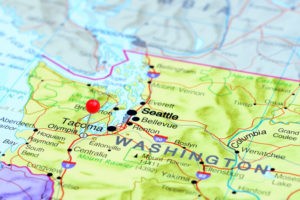 One thing that’s a real shame is how difficult it is for Washington small businesses to add their accountant as a user on their Department of Revenue e-filing account. The program was clearly designed under the assumption that businesses will all handle filing B&O and sales tax returns themselves. But this can often overwhelm super-small businesses that don’t have the time or expertise to sort through stuff like industry categories and retail vs. wholesale sales.
One thing that’s a real shame is how difficult it is for Washington small businesses to add their accountant as a user on their Department of Revenue e-filing account. The program was clearly designed under the assumption that businesses will all handle filing B&O and sales tax returns themselves. But this can often overwhelm super-small businesses that don’t have the time or expertise to sort through stuff like industry categories and retail vs. wholesale sales.
In this article, I’m going to do my best to explain the correct way to add your accountant as a user on your Washington Department of Revenue e-filing account. And then, perhaps more importantly, I’ll describe one key mistake you don’t want to make when sharing your data with other users.
If You Already Have a DOR Account
You take two steps to add your accountant if you’ve already created a department of revenue account:
Step 1: Provide Written Authorization
The first thing you need to do is give your tax accountant formal permission to file your returns for you. You do this by signing a Confidential Tax Information Authorization form (as of this writing Form 27-0060e). Your accountant should be able to provide you with a pre-filled version of this form with all of the fields correctly filled out.
Step 2: Add Your Accountant as a New User
You’ll need you to add your accountant’s DOR account as a new user with administrator privileges. Here’s how to do so:
- Log in to your WA DOR account at http://dor.wa.gov
- In the navigation menu on the left side of the screen, go to Manage Account → Add/edit/remove users
- Add your accountant as an existing user. For example, our firm’s logon ID is RedmondCPA and the email associated with the account is steve@stephenlnelson.com.
If you’re adding a multi-employee accounting firm to prepare your tax returns, then be sure to give the firm administrator privileges when you add their user account. Your accountant will need these privileges in order to appropriately delegate tasks to different employees on their end. Ask your accountant for help with this process if you have any questions; they should be able to walk you through setting things up correctly.
If You Have Not Yet Created a DOR Account
If you haven’t yet created a Washington Department of Revenue Account, you need to take a slightly different approach:
Step 1: Provide Written Authorization
Same as above, the first thing you need to do is give your tax accountant formal permission to file your returns for you. You do this by signing a Confidential Tax Information Authorization form (as of this writing Form 27-0060e). Again, your accountant should be able to provide you with a pre-filled version of this form with all of the fields correctly filled out.
Step 2: Provide Your Pre-Assigned Access Code (PAC)
Your accountant will also need your pre-assigned access code (PAC) from the Department of Revenue. If you do not know your PAC, you can consult this article for guidance or call 1-800-647-7706 for assistance.
If you can’t find your PAC and want your accountant to obtain it for you, they can probably do so. However, they’ll need the above-mentioned authorization form signed in order to be able to communicate with the DOR for you on your behalf.
Step 3: Be sure to obtain an administrator login for your business’ account
You love your accountant now. You’d never think of leaving them. But sometimes, things do come to an end. If you don’t create an administrator-level user account for yourself and then decide you need to switch accountants, you’ll create a massive headache for yourself, your new accountant, your old accountant, and the poor DOR employees who are forced to deal with this clunky IT system every day. Better to think ahead.
How Not to Share Your Data with Your Accountant
Never email your login credentials with your accountant as the way you provide access to your DOR account. I know, it’s really tempting given how poorly-designed the user interface is. But remember that most email is unencrypted, and any identity thief with a clue knows that tax accounting firms in particular have access to hundreds of people’s social security numbers and bank account numbers.
It’s too easy to snoop on unencrypted email and your accountant’s email server is too tempting of a target. So don’t do it.
Relevant, Related Posts You Might Like
Washington State Business & Occupation Taxes: A Primer
Why You Should Be Nervous About Washingon’s Shop Exchange
Getting Ready for Seattle’s New $15 an hour Minimum Wage